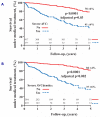Risk Stratification in Patients With Aortic Stenosis Using Novel Imaging Approaches
- PMID: 26198161
- PMCID: PMC4539578
- DOI: 10.1161/CIRCIMAGING.115.003421
Risk Stratification in Patients With Aortic Stenosis Using Novel Imaging Approaches
Keywords: aortic valve stenosis; echocardiography; endomyocardial fibrosis; magnetic resonance imaging; positron emission tomography.
Figures







References
-
- Nkomo VT, Gardin JM, Skelton TN, Gottdiener JS, Scott CG, Enriquez-Sarano M. Burden of valvular heart diseases: a population-based study. Lancet. 2006;368:1005–11. - PubMed
-
- Carabello BA. Introduction to aortic stenosis. Circ Res. 2013;113:179–85. - PubMed
-
- Rajamannan NM, Evans FJ, Grande-Allen EAK, Demer LL, Heistad DD, Simmons CA, Masters KS, Mathieu P, O’Brien KD, Schoen FJ, Towler DA, Yoganathan AP, Otto CM. Calcific aortic valve disease: not simply a degenerative process: a review and agenda for Research from the National Heart and Lung and Blood Institute Aortic Stenosis Working Group Executive Summary: Calcific aortic valve disease - 2011 Update. Circulation. 2011;124:1783–91. - PMC - PubMed
-
- Ross J, Braunwald E. Aortic stenosis. Circulation. 1968;38:V61–V67. - PubMed
-
- Dweck MR, Boon NA, Newby DE. Calcific aortic stenosis: a disease of the valve and the myocardium. J Am Coll Cardiol. 2012;60:1854–63. - PubMed
Publication types
MeSH terms
Supplementary concepts
Grants and funding
LinkOut - more resources
Full Text Sources
Medical

